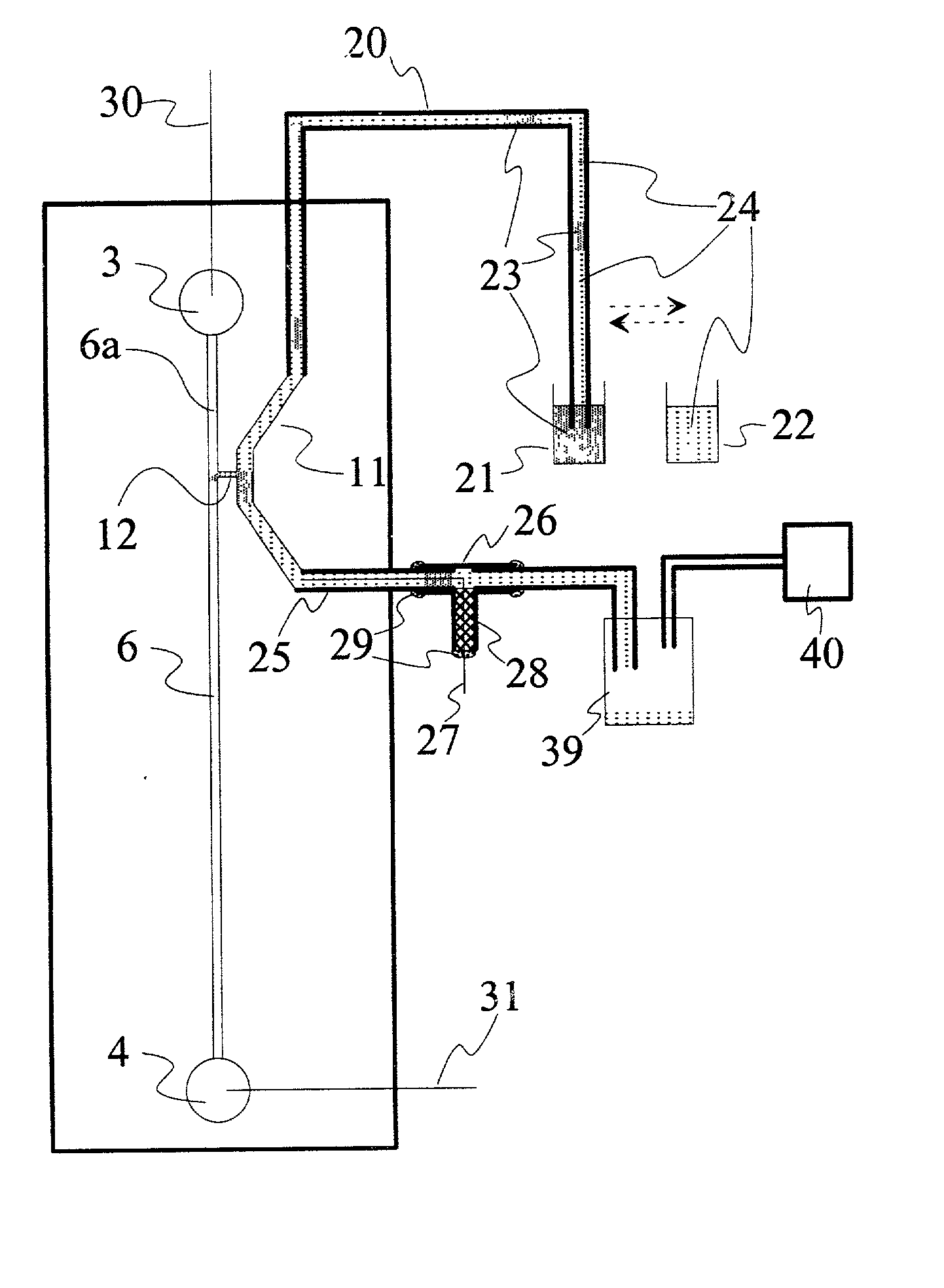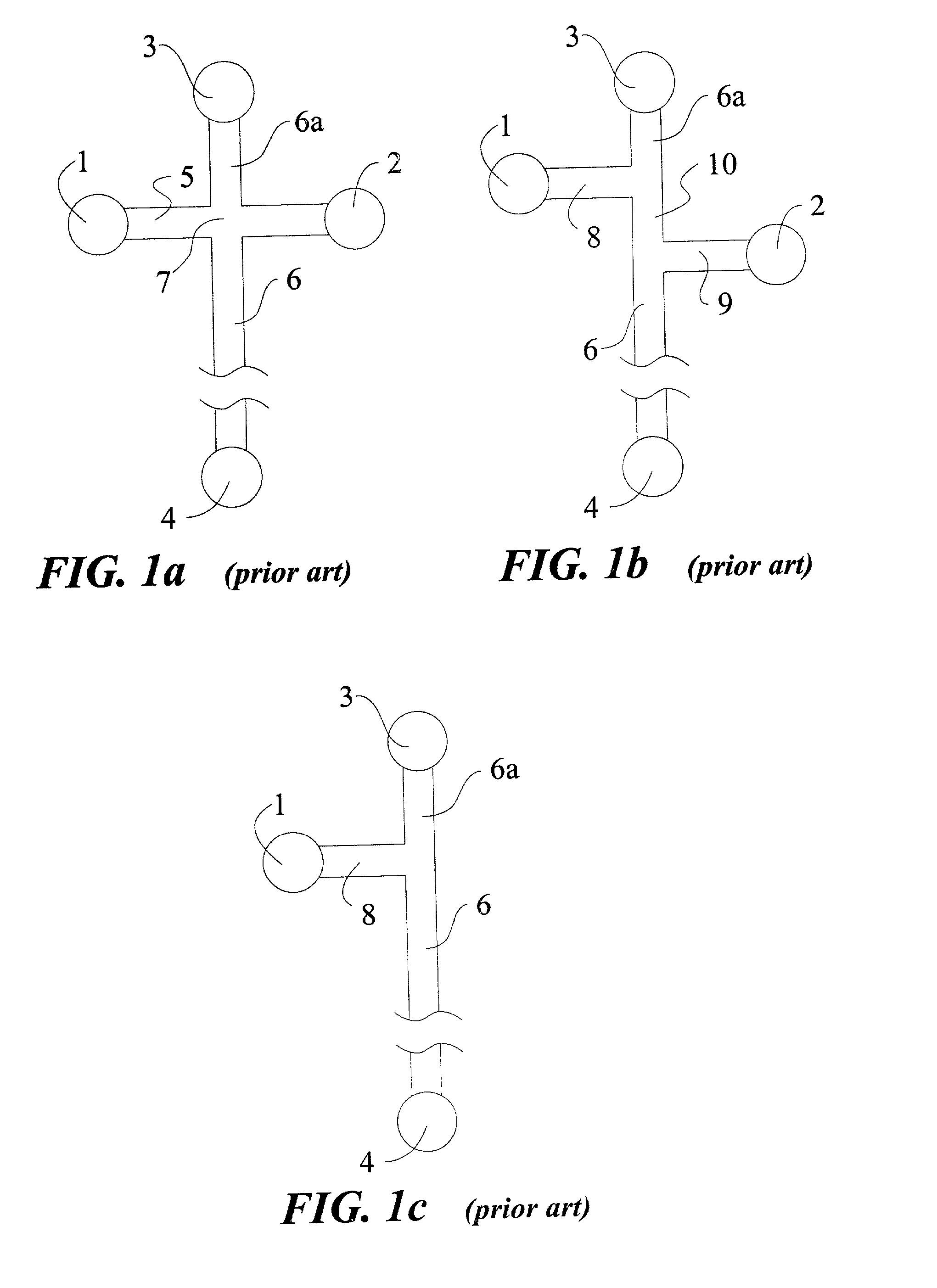Method and apparatus for sample injection in microfabricated devices
a microfabricated device and sample technology, applied in the field of sample injection methods and apparatuses in microfabricated devices, can solve the problems of large sampling volume, time-consuming and expensive existing dna analysis procedures, and insufficient application of capillary electrophoresis techniques in both industry and academia
- Summary
- Abstract
- Description
- Claims
- Application Information
AI Technical Summary
Problems solved by technology
Method used
Image
Examples
Embodiment Construction
[0045] The present description is of the best presently contemplated mode of carrying out the invention. This description is made for the purpose of illustrating the general principles of the invention and should not be taken in a limiting sense. The scope of the invention is best determined by reference to the appended claims.
[0046] For purpose of illustrating the principles of the present invention and not limitation, the present invention is described by reference to embodiments directed to separation in capillary electrophoresis. The present invention is equally applicable to chemical reactions, diagnostics and / or analysis in microfluidic devices. All references to separation channel hereinafter are examples of reaction channels, and are equally applicable to channels for other purposes in microfluidic devices.
[0047] Referring to one embodiment of the present invention illustrated in FIG. 2a, the off-column sample injection scheme of the present invention is embodied in the form...
PUM
| Property | Measurement | Unit |
|---|---|---|
| internal diameter | aaaaa | aaaaa |
| volumes | aaaaa | aaaaa |
| volume | aaaaa | aaaaa |
Abstract
Description
Claims
Application Information
 Login to View More
Login to View More - R&D
- Intellectual Property
- Life Sciences
- Materials
- Tech Scout
- Unparalleled Data Quality
- Higher Quality Content
- 60% Fewer Hallucinations
Browse by: Latest US Patents, China's latest patents, Technical Efficacy Thesaurus, Application Domain, Technology Topic, Popular Technical Reports.
© 2025 PatSnap. All rights reserved.Legal|Privacy policy|Modern Slavery Act Transparency Statement|Sitemap|About US| Contact US: help@patsnap.com



